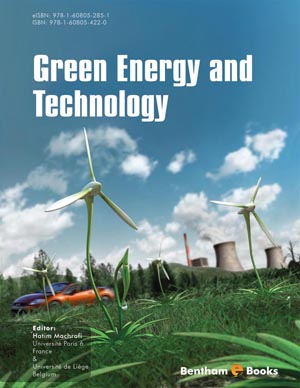Abstract
Generation of electrical energy from the wind can be a suitable proposition for off grid power supply at locations having a favorable wind regime. Proper design of wind power generation system is of utmost importance to assure maximum benefit to the consumer in terms of economic competitiveness as well as power supply reliability. Designing a wind power system involves appropriate sizing of different components based on the availability of wind speeds and the energy demand. Since, wind as a resource is intermittent and variable by nature, the mismatch between the generation and demand can be leveled by provision of a battery bank as a storage medium. A methodology for designing an efficient wind-battery power system is presented in this chapter. The major system design parameters are identified to be the wind rotor diameter, the generator rating and the storage capacity. By considering the energy interactions between the generator, the storage system and the load over a given time horizon, a number of feasible design solutions can be generated. A diagrammatic representation of all feasible solutions enables a system designer to understand the tradeoffs between different system design variables, corresponding maximum and minimum limits, and arrive at an optimum solution system subject to an appropriate design objective as well.
Keywords: Wind, power, generation system, performance analysis, rotor, model, sizing wind-based system, standalone, power system, wind-battery power system, wind speed, physical design, rotor diameter, generator rating, design, optimal.


















